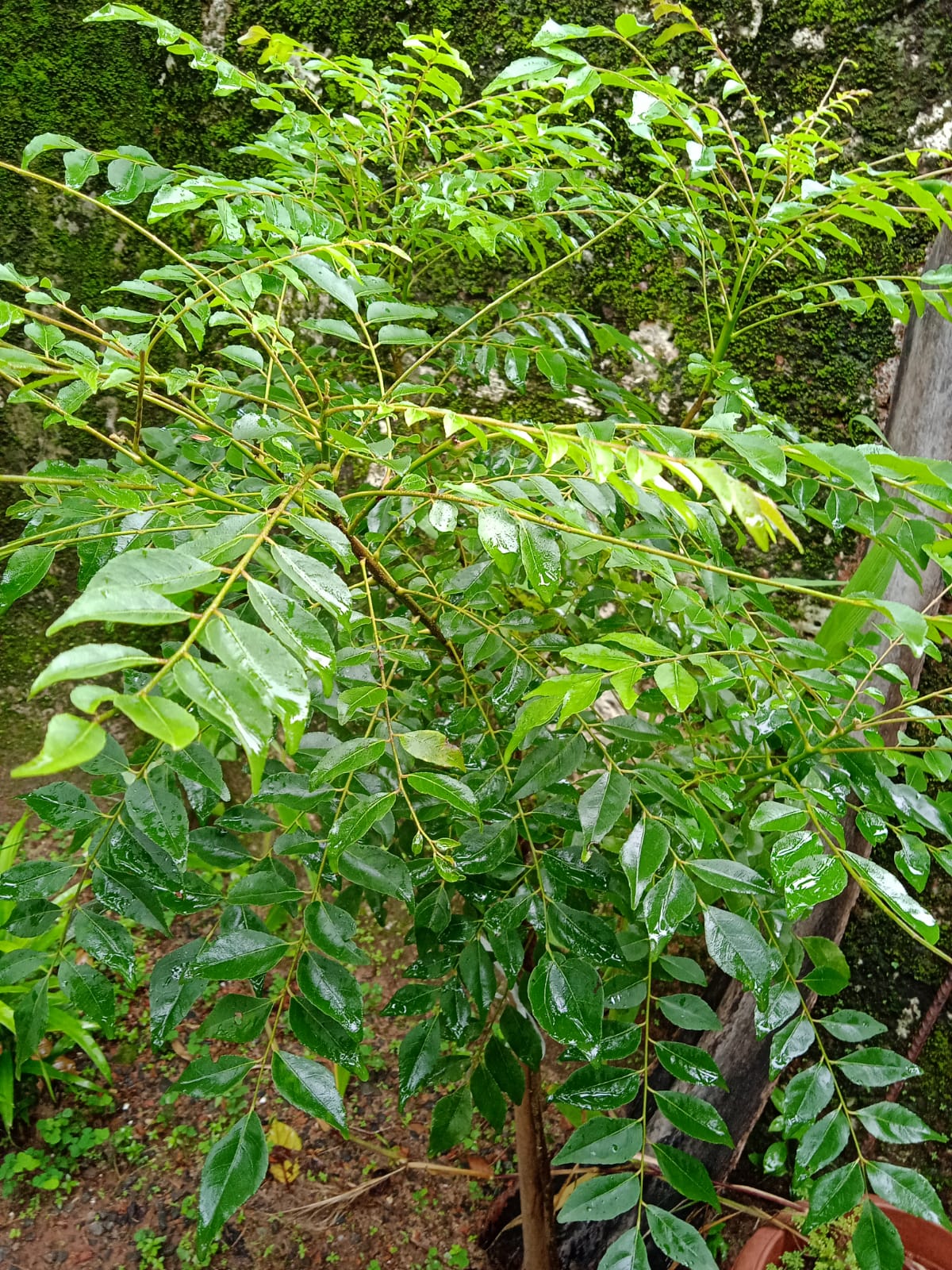Local Name:
Kariveppila
Common Name:
curry leaf tree, curry bush
Scientific Name:
Bergera koenigii L.
Family:
Rutaceae
Vernacular Name:
Karipatta, Karivepu
Habit:
shrub or small tree
Habitat:
It thrives in well-drained, red sandy loam soil.
Distribution:
Tropical and subtropical regions
Flowering Season:
Mid-April to mid-May
Fruiting Season:
Mid-July to the end of August
Altitude:
60-1200m
Uses:
Flavoring Agent
Medicinal Properties
Digestive Aid
Essential Oil
Antimicrobial and Antioxidant Properties
Potential Anticancer Effects
Part Used:
Leaf, Root
Method of Use:
A paste of curry leaves with buttermilk is used for relief from indigestion.
Fresh juice of curry leaves with lime juice and sugar is used for morning sickness.
Root juice is used for renal pain.
The leaves are believed to prevent the progression of cataracts.
The bark is used in some regions to treat snakebites.
Folklore:
Often associated with auspiciousness, purity, and protection. It's a common ingredient in rituals and festivals, symbolizing positive energy. The leaves are also believed to have medicinal properties and are used in traditional healing practices.
Location:
kottakkal, parappur
GPS Coordinates:
11.0121° N, 75.9947° E
Collection Date:
2025-07-01
Collector Name:
Rajla A M
IUCN Status:
Least Concern (LC)
Invasive Status:
No
Chromosome Number:
2n=18
Pollination Type:
self pollination and insect pollination (less)
Seed Dispersal:
Endozoochory
Phytochemicals:
carbazole alkaloids. Phytocompounds like koenimbine, koenine, mahanimbine, murrayazolidine, murrayazoline, murrayacine, girinimbine, mukoeic acid, etc
Description:
Murraya koenigii, commonly known as curry leaf, is a semi-deciduous, aromatic shrub or small tree, typically found in South Asia. It is characterized by its slender, woody stem, dark grey bark, and strongly aromatic, imparipinnate leaves with 9-25 or more leaflets. The plant is widely used in traditional medicine and cuisine for its flavor and potential health benefits.

